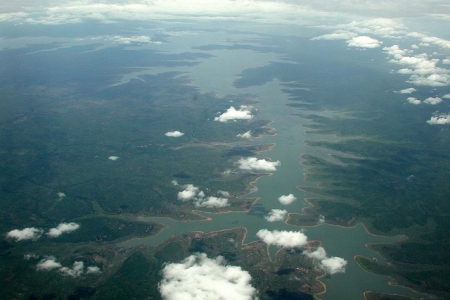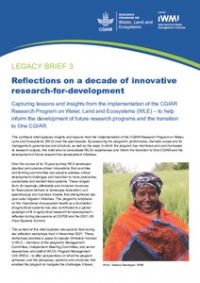
Countries can cooperate on the governance of shared waters at different scales. For one example, as early as 1857, several European states signed an agreement on the management of water flow from lake Constance, which focused mainly on riparian infrastructure. In the 20th century in Central Asia, more than 100 agreements were formulated that focused on tributaries in the Syr Darya basin. More recently, in 2004, the agreement to form the Zambezi Watercourse Commission was concluded that applied to the Zambezi basin.
Managing water across boundaries may be enhanced when the scale of the intervention is carefully considered. Adopt too small a scale and key stakeholders and impacts may be excluded. This can undermine the sustainability of water management efforts. Working at too large a scale, on the other hand, may slow down decision-making and lead to inertia that constrains management efforts. Striking the right balance is still a work in progress.
In the last couple of decades, basin-wide water management—particularly in transboundary contexts—has become the conventional, “in-the-box” approach to managing water. This is especially true in the developing world. Managing rivers at the basin scale makes it easier to include potential impacts and concerned stakeholders. Further, there is more opportunity to optimize the benefits of the approach at the whole system level. And it is more intuitive, as it follows natural boundaries.
Despite their theoretical strengths, practical experiences in transboundary basin management have had mixed results. River basin organizations have struggled to secure needed funding from riparian countries. International donors have grown fatigued with the slow progress towards development impact. What’s more, the degree to which basin-wide management bodies can be said to wield real influence is somewhat variable.
To begin to understand the variation and influence of scale in shared water management, a comprehensive review of the scale of transboundary water law was undertaken—the first of its kind. We classified a global collection of 215 water treaties into six scale categories, ranging from the sub-basin level up to all waters shared between signatory countries; having categorized those treaties, we determined abundance of treaties at different scales and analysed their characteristics.
The review revealed that just over 20 percent of the 215 water treaties currently in existence are at the basin-level. About two thirds are at scales inside the basin such as tributary and infrastructure. The remaining 13 percent are focused more broadly on all shared waters. Small-scale treaties are often focused on action-oriented cooperation, such as joint activities like hydropower development and flood control. By contrast, large-scale treaties place more focus on the processes of organization and policy development.
The findings of this review suggest that the key to selecting the appropriate scale for engagement in transboundary waters may be to respond to the primary goal of cooperation. Small-scale cooperation may be more efficient for action; on the other hand, large-scale cooperation may be more suited to policy processes. Failing to match a cooperative goal and scale may well hinder the implementation of transboundary water management. Full basin-scale treaties are more frequently concluded in Africa and Asia than other regions.
Operating at small scales does not preclude basin-scale cooperation: there are roles for both types of water management cooperation in the same basin. Different scales of engagement can in fact reinforce and complement one another, forging balanced and robust solutions. Nonetheless, in regions with a need for development-oriented activities such as Africa and Asia, it may be sensible to place relatively greater emphasis on small-scale cooperation within existing basin-scale organizational frameworks. Indeed, it may be time to think outside the box, and inside the basin.






/index.jpg?itok=EzuBHOXY&c=feafd7f5ab7d60c363652d23929d0aee)










